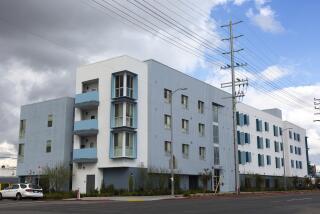Opinion: Defeat of the parks tax: The problem with P
A majority of Los Angeles County voters who weighed in Tuesday on the parcel-tax-for-parks measure known as Proposition P voted for it, but that wasn’t good enough. As a local tax, P needed a two-thirds vote to pass, and with only about 62%, it fell short.
And deservedly so – not because funding for parks and cultural amenities is a bad idea, but because of a laundry list of problems – including the fact that Proposition P was hatched behind closed doors, irresponsibly and needlessly rushed, and crafted so as to minimize scrutiny and public participation. There was no opportunity to shape the measure, to call for performance benchmarks, to discuss the degree of discretion each supervisor would have over spending. Here’s the ballot measure, the supervisors said, already written. Take it or leave it.
If that sounds like pretty standard stuff for government and for ballot measures, consider this: The county is the last place in California in which a measure can make it to the ballot without prior public hearings and open discussions at which language can be considered, corrected and fine-tuned before the wording is set in stone.
It doesn’t have to be that way – the Board of Supervisors could conduct hearings and take testimony well in advance its decisions – but that’s not the board’s way. Take it or leave it.
Consider how different things are in the city of L.A., as opposed to the county. Any ballot measure proposed by the Los Angeles City Council goes through a series of public committee hearings where it can be vetted not merely by council members but by anyone. Such measures have to jump through enough hoops that voters learn of the issues and controversies, and language can be altered to reflect the give-and-take of public testimony, well before the final decision to put the measure on the ballot.
The city’s process can still seem rushed and the resulting measures still shaped more by shadowy forces operating behind closed doors – lobbyists, real estate developers, public employee unions – than by public discussion. Note, for example, last year’s proposed city sales tax increase, or the notorious 2009 proposition on solar power known as Measure B. The measures moved swiftly to council votes, with too little opportunity for public discussion – but at least there was some discussion in advance. Not like the county.
And what about state propositions, like the six on Tuesday’s ballot?
Props 1 and 2, the water bond and the rainy-day fund, emerged from negotiations between the Legislature and Gov. Jerry Brown. Public participation was not exactly embraced. Still, there were open hearings and few surprises.
Yes, Props 45, 46, and 47 were voter initiatives (and 48 was a voter referendum), already written with no opportunity for changes when signature gatherers stood in front of grocery stores this year and signed up voters. The legislative hearings came long after it was too late to catch mistakes or discuss better options.
But that will never happen again. This year Brown signed SB 1253, which starting in 2016 will require those public hearings to happen early in the process, while there is still time for the public to shape the language.
The Board of Supervisors, meanwhile, has the power to conduct as many hearings as it wants on county measures in advance of putting them on the ballot. But it doesn’t want any.
Sure, the board conducted a public hearing on Aug. 5 – it had to – well after closed-door negotiations had been concluded, with the shortest possible advance notice to the public (two business days) and on the last possible day for the supervisors to put Proposition P on the Nov. 4 ballot.
But it was no public hearing worthy of the name. A true public hearing on a proposed ballot measure is one at which there is wide advance notice, and testimony has a reasonable chance to be taken into account before drafting is done. Nothing prevents the Board of Supervisors from having several such hearings.
At the one hearing the board did have, Supervisor Zev Yaroslavsky said Proposition P had been discussed for months – “within the county family” – and with cities and community organizations that contacted his office.
The remark is telling. The public that elects, pays and is served by the “county family” is not a family member and has no role in family discussions. It is an interloper. Cities and other organizations that reached out to him, rather than the other way around, were included.
One key member of the county family, Ross Guiney – the director of the Department of Parks and Recreation who also happens to be the director of the Regional Park and Open Space District, which administers parks tax revenues – responded to a query from Supervisor Michael Antonovich about outreach to municipal parks departments by saying:
“Given the time constraints that we have, there hasn’t been that communication.”
Time constraints? County officials have known this day was coming for 22 years.
Proposition P was to replace a 1992 measure known as Proposition A, which is set to expire next June 30. A supplemental property tax for parks – and open space acquisition, funds for construction of cultural institutions, recreation centers and other amenities – was adopted in 1996 and expires in mid-2019.
That leaves the newly reconstituted county Board of Supervisors – including the two new members who take office next month – two years until the next election, in 2016, to conduct the appropriate outreach and public discussions to shape a consensus funding measure.
That’s how the original Proposition A was created – following a two-year process of discussions and needs assessments.
It will be an important test of the new board: Does it continue the county’s ingrained contempt for public access and participation, or does it open up the county family’s dinner table to the public?
It would be a shame for the county to come back in two years without such a process, and instead with a measure negotiated out of public view and an arrogant ultimatum to the public of “take it or leave it.” On Tuesday, a majority of voters was ready to take it, but the supermajority that was needed, and that under other circumstances might also have agreed to take it – had there been an open process and public discussion – opted to leave it.
Follow me on Twitter @RGreene2.
More to Read
A cure for the common opinion
Get thought-provoking perspectives with our weekly newsletter.
You may occasionally receive promotional content from the Los Angeles Times.







